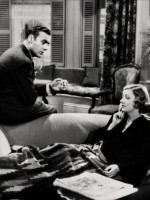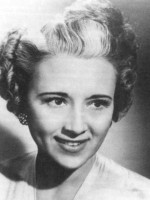Herbert Marshall is a Actor and Story British born on 21 may 1890 at London (United-kingdom)

Herbert Brough Falcon Marshall (23 May 1890 – 22 January 1966) was an English stage, screen and radio actor who, in spite of losing a leg during the First World War, starred in many popular and well-regarded Hollywood films in the 1930s and 1940s. After a successful theatrical career in the United Kingdom and North America, he became an in-demand Hollywood leading man, frequently appearing in romantic melodramas and occasional comedies. In his later years, he turned to character acting.
The son of actors, Marshall is best remembered for roles in Ernst Lubitsch's Trouble in Paradise (1932), Alfred Hitchcock's Murder! (1930) and Foreign Correspondent (1940), William Wyler's The Letter (1940) and The Little Foxes (1941), Albert Lewin's The Moon and Sixpence (1942), Edmund Goulding's The Razor's Edge (1946), and Kurt Neumann's The Fly (1958). He appeared onscreen with many of the most prominent leading ladies of Hollywood's Golden Age, including Greta Garbo, Marlene Dietrich and Bette Davis.
From 1944 to 1952, Marshall starred in his own radio series, The Man Called 'X'. Often praised for the quality of his voice, he made numerous radio guest appearances and hosted several shows. He performed on television as well. The actor, known for his charm, married five times and periodically appeared in gossip columns because of his sometimes turbulent private life. During the Second World War, he worked on the rehabilitation of injured troops, especially aiding amputees like himself. Marshall received a star on the Hollywood Walk of Fame in 1960.
"His first charm is that he is a thoroughly nice, reasonable Englishman. He has a peculiarly easy, unaffected manner. He is tallish and dresses with exceptional taste and discretion. Also he gives an impression of hidden reserves, a sort of enticing withdrawal...And manners. The man has every charming trick of engaging manners known to masculinity".
—Reporter Alma Whitaker describing Marshall in The Los Angeles Times, 1932
Marriages and family
Marshall was married five times, divorced three. In 1914, he appeared with Mollie Maitland (whose real name was Hilda Lloyd Bosley) in The Headmaster; the following year, they were married. Five years later, he first appeared with Edna Best, who would become his most frequent stage co-star; they also made three films together (The Calendar, Michael and Mary and The Faithful Heart). Marshall and Best were married in November 1928, following their respective divorces (they had been cohabiting for the previous three years). In 1931, Best broke a lucrative contract with MGM and walked off the filming of The Phantom of Paris with John Gilbert in order to be with Marshall in New York, where he was performing in a play. In response to a press inquiry, he said: "I'm sorry if Hollywood is annoyed, but Edna and I happen to be in love with each other and we want to be together."
During a return trip to London in late November 1932, Marshall and a pregnant Best gave an interview in which they stated their intention to briefly return to Hollywood the following summer. They would bring a nanny to help look after their daughter. At some point, Best and young Sarah returned to London while Marshall received more film offers. They continued making trips to see each other. In late 1933, actress Phyllis Barry had tea with Marshall and Claudette Colbert after they returned from Hawaii, where they had been filming Four Frightened People. She remembered that Marshall "insisted on my talking all the time because he said I sounded just like his wife". By the time Marshall was filming Riptide in early 1934, he was reportedly drinking heavily due to his problems with Best and increased phantom pain. (Director Goulding and co-star Norma Shearer successfully convinced him to curb his consumption of alcohol.) Not long after, Goulding would introduce him to Gloria Swanson.
In 1940, after a long separation from her husband and wanting to marry someone new, Best divorced Marshall on grounds of desertion (he lived in Hollywood, while she lived in Britain). She remarried almost immediately. Twenty days later, he married actress and model Elizabeth Roberta "Lee" Russell, a sister of film star, Rosalind Russell. Two years prior to their marriage, Russell's recently divorced ex-husband, songwriter Eddy Brandt, initiated an alienation of affection suit for $250,000 against Marshall, whom he accused of stealing his wife. Brandt later told the press that he and the actor settled out of court for $10,000. Marshall publicly denied this claim. In 1947, Russell divorced him in Mexico. They parted on amiable terms. Instead of explaining the reasons for her divorce, she told the press at the time: "I will never say anything against Bart. He is one of the most charming people I have ever known."
He was married to his fourth wife, former Ziegfeld girl and actress Patricia "Boots" Mallory, from 1947 until her death in 1958. They were wed in August 1947, with Nigel Bruce acting as best man. After a sixteen-month illness, Mallory died of a throat ailment at age 45. Marshall was deeply troubled by her death and had to be hospitalised for pneumonia and pleurisy less than two months later. He married his final wife, Dee Anne Kahmann, on 25 April 1960, when he was almost 70 years old. She was a twice-divorced, 38-year-old department store buyer. They remained married until his death.
Marshall had a daughter, Sarah, by Edna Best, and another daughter, Ann, by Lee Russell. Sarah Marshall followed her parents and grandparents into the acting profession, appearing in many of the most popular television shows of the 1960s, including Star Trek, The Twilight Zone, Perry Mason, F Troop and Daniel Boone. Herbert and Sarah Marshall acted together in a television version of J. B. Priestley's play, An Inspector Calls, in 1951. His younger daughter, Ann Marshall (often called "Annie"), worked for many years as Jack Nicholson's personal assistant. He also had at least four step-children, two from his marriage to Best and two from his marriage to Mallory. His grandson, Timothy M. Bourne, Sarah Marshall's only child, is an independent film producer. Bourne was the executive producer of the Academy Award-winning film The Blind Side (2009).
Affair with Gloria Swanson
In the early 1930s, Marshall was commonly rumoured within Hollywood social circles to have had affairs with both his Trouble in Paradise co-stars, Kay Francis and Miriam Hopkins. In January 1934, Marshall, while still married to Best, began a serious affair with actress Gloria Swanson, who recounted their relationship in her memoirs, Swanson on Swanson (1980). She described Marshall at the time of their first meeting as "a handsome man in his early forties with a gentle face and soft brown eyes", who had "one of the most perfect musical voices I had ever heard". Swanson also wrote that the actor was "sweet beyond belief" and "a nice man", who "utterly charmed" her and her children. He constantly wrote her love notes, and when she was out of town, he sent her romantic telegrams almost hourly. (Many of these personal documents now reside at the University of Texas at Austin's Harry Ransom Center archives, as part of the Gloria Swanson Papers.) Newspapers and film fan magazines widely discussed his affair with Swanson at the time, which he made little attempt to keep secret.
In November 1936, Swanson left him once she accepted that he would not divorce Edna Best to marry her. Although insisting they were "madly in love," she believed that he would not demand a divorce because of his typically docile nature, reluctance to deliberately hurt people, and guilt over his separation from his young daughter. "He would always turn to alcohol rather than face a painful scene," she remembered. Despite an emotional parting, near the end of her life Swanson, who was married six times, wrote: "I was never so convincingly and thoroughly loved as I was by Herbert Marshall."
A few months into their relationship, Marshall became a subject of media gossip after a confrontation at El Morocco in New York City. A photographer snapped pictures of the couple dining together. The photos were subsequently published in newspapers and magazines. When Marshall saw that Swanson was annoyed by the photographer, he "went into one of the most spectacular rages of all times," according to Modern Screen. In a syndicated column, Ed Sullivan wrote that he watched Marshall "rise violently" from his seat and chase the cameraman down the aisles between the nightclub's tables.
Around two months after this incident, Marshall again received substantial publicity after screenwriter John Monk Saunders (husband of actress Fay Wray) punched him in the face and knocked him to the floor at a dinner party given by director Ernst Lubitsch. According to a wire report, Marshall took exception to something Saunders said about Gloria Swanson. Later that night, after Marshall called Saunders a derogatory name, Saunders hit him while he was, in his own words, "seated...and looking in an opposite direction". Wray later added details unreported at the time. According to her, Marshall referred to Saunders as a "bestial bastard" after the screenwriter ogled Swanson's décolletage. Articles about the incident commonly mentioned Marshall's prosthetic leg, which had only very rarely been talked about in the press up to that point.
Source : Wikidata
Herbert Marshall

- Infos
- Photos
- Best films
- Family
- Characters
- Awards
Birth name Herbert Brough Falcon Marshall
Nationality United-kingdom
Birth 21 may 1890 at London (United-kingdom)
Death 23 january 1966 (at 75 years) at Beverly Hills (USA)
Nationality United-kingdom
Birth 21 may 1890 at London (United-kingdom)
Death 23 january 1966 (at 75 years) at Beverly Hills (USA)
The son of actors, Marshall is best remembered for roles in Ernst Lubitsch's Trouble in Paradise (1932), Alfred Hitchcock's Murder! (1930) and Foreign Correspondent (1940), William Wyler's The Letter (1940) and The Little Foxes (1941), Albert Lewin's The Moon and Sixpence (1942), Edmund Goulding's The Razor's Edge (1946), and Kurt Neumann's The Fly (1958). He appeared onscreen with many of the most prominent leading ladies of Hollywood's Golden Age, including Greta Garbo, Marlene Dietrich and Bette Davis.
From 1944 to 1952, Marshall starred in his own radio series, The Man Called 'X'. Often praised for the quality of his voice, he made numerous radio guest appearances and hosted several shows. He performed on television as well. The actor, known for his charm, married five times and periodically appeared in gossip columns because of his sometimes turbulent private life. During the Second World War, he worked on the rehabilitation of injured troops, especially aiding amputees like himself. Marshall received a star on the Hollywood Walk of Fame in 1960.
Biography
Marshall, a quiet-spoken man who was one of the pillars of the Hollywood British community, was widely respected and well-liked due to his talent and professionalism, pleasant and easygoing demeanor, sensitivity, gentlemanly and courteous manner, witty sense of humor, and his "very great personal charm". Among the affable actor's many friends in the British community were Edmund Goulding, Eric Blore, Ronald Colman, Clive Brook, Merle Oberon, Sir C. Aubrey Smith, David Niven, Basil Rathbone, Sir Cedric Hardwicke and Brian Aherne. Other friends included Raymond Massey, Rod La Rocque, Vilma Bánky, Kay Francis, Mary Astor, Irving Thalberg, Norma Shearer, Joan Crawford, Melvyn Douglas, Bette Davis and Grace Moore. Although popular and likeable, Marshall suffered from bouts of depression through much of his life. In his free time, he especially enjoyed sketching and fishing."His first charm is that he is a thoroughly nice, reasonable Englishman. He has a peculiarly easy, unaffected manner. He is tallish and dresses with exceptional taste and discretion. Also he gives an impression of hidden reserves, a sort of enticing withdrawal...And manners. The man has every charming trick of engaging manners known to masculinity".
—Reporter Alma Whitaker describing Marshall in The Los Angeles Times, 1932
Marriages and family
Marshall was married five times, divorced three. In 1914, he appeared with Mollie Maitland (whose real name was Hilda Lloyd Bosley) in The Headmaster; the following year, they were married. Five years later, he first appeared with Edna Best, who would become his most frequent stage co-star; they also made three films together (The Calendar, Michael and Mary and The Faithful Heart). Marshall and Best were married in November 1928, following their respective divorces (they had been cohabiting for the previous three years). In 1931, Best broke a lucrative contract with MGM and walked off the filming of The Phantom of Paris with John Gilbert in order to be with Marshall in New York, where he was performing in a play. In response to a press inquiry, he said: "I'm sorry if Hollywood is annoyed, but Edna and I happen to be in love with each other and we want to be together."
During a return trip to London in late November 1932, Marshall and a pregnant Best gave an interview in which they stated their intention to briefly return to Hollywood the following summer. They would bring a nanny to help look after their daughter. At some point, Best and young Sarah returned to London while Marshall received more film offers. They continued making trips to see each other. In late 1933, actress Phyllis Barry had tea with Marshall and Claudette Colbert after they returned from Hawaii, where they had been filming Four Frightened People. She remembered that Marshall "insisted on my talking all the time because he said I sounded just like his wife". By the time Marshall was filming Riptide in early 1934, he was reportedly drinking heavily due to his problems with Best and increased phantom pain. (Director Goulding and co-star Norma Shearer successfully convinced him to curb his consumption of alcohol.) Not long after, Goulding would introduce him to Gloria Swanson.
In 1940, after a long separation from her husband and wanting to marry someone new, Best divorced Marshall on grounds of desertion (he lived in Hollywood, while she lived in Britain). She remarried almost immediately. Twenty days later, he married actress and model Elizabeth Roberta "Lee" Russell, a sister of film star, Rosalind Russell. Two years prior to their marriage, Russell's recently divorced ex-husband, songwriter Eddy Brandt, initiated an alienation of affection suit for $250,000 against Marshall, whom he accused of stealing his wife. Brandt later told the press that he and the actor settled out of court for $10,000. Marshall publicly denied this claim. In 1947, Russell divorced him in Mexico. They parted on amiable terms. Instead of explaining the reasons for her divorce, she told the press at the time: "I will never say anything against Bart. He is one of the most charming people I have ever known."
He was married to his fourth wife, former Ziegfeld girl and actress Patricia "Boots" Mallory, from 1947 until her death in 1958. They were wed in August 1947, with Nigel Bruce acting as best man. After a sixteen-month illness, Mallory died of a throat ailment at age 45. Marshall was deeply troubled by her death and had to be hospitalised for pneumonia and pleurisy less than two months later. He married his final wife, Dee Anne Kahmann, on 25 April 1960, when he was almost 70 years old. She was a twice-divorced, 38-year-old department store buyer. They remained married until his death.
Marshall had a daughter, Sarah, by Edna Best, and another daughter, Ann, by Lee Russell. Sarah Marshall followed her parents and grandparents into the acting profession, appearing in many of the most popular television shows of the 1960s, including Star Trek, The Twilight Zone, Perry Mason, F Troop and Daniel Boone. Herbert and Sarah Marshall acted together in a television version of J. B. Priestley's play, An Inspector Calls, in 1951. His younger daughter, Ann Marshall (often called "Annie"), worked for many years as Jack Nicholson's personal assistant. He also had at least four step-children, two from his marriage to Best and two from his marriage to Mallory. His grandson, Timothy M. Bourne, Sarah Marshall's only child, is an independent film producer. Bourne was the executive producer of the Academy Award-winning film The Blind Side (2009).
Affair with Gloria Swanson
In the early 1930s, Marshall was commonly rumoured within Hollywood social circles to have had affairs with both his Trouble in Paradise co-stars, Kay Francis and Miriam Hopkins. In January 1934, Marshall, while still married to Best, began a serious affair with actress Gloria Swanson, who recounted their relationship in her memoirs, Swanson on Swanson (1980). She described Marshall at the time of their first meeting as "a handsome man in his early forties with a gentle face and soft brown eyes", who had "one of the most perfect musical voices I had ever heard". Swanson also wrote that the actor was "sweet beyond belief" and "a nice man", who "utterly charmed" her and her children. He constantly wrote her love notes, and when she was out of town, he sent her romantic telegrams almost hourly. (Many of these personal documents now reside at the University of Texas at Austin's Harry Ransom Center archives, as part of the Gloria Swanson Papers.) Newspapers and film fan magazines widely discussed his affair with Swanson at the time, which he made little attempt to keep secret.
In November 1936, Swanson left him once she accepted that he would not divorce Edna Best to marry her. Although insisting they were "madly in love," she believed that he would not demand a divorce because of his typically docile nature, reluctance to deliberately hurt people, and guilt over his separation from his young daughter. "He would always turn to alcohol rather than face a painful scene," she remembered. Despite an emotional parting, near the end of her life Swanson, who was married six times, wrote: "I was never so convincingly and thoroughly loved as I was by Herbert Marshall."
A few months into their relationship, Marshall became a subject of media gossip after a confrontation at El Morocco in New York City. A photographer snapped pictures of the couple dining together. The photos were subsequently published in newspapers and magazines. When Marshall saw that Swanson was annoyed by the photographer, he "went into one of the most spectacular rages of all times," according to Modern Screen. In a syndicated column, Ed Sullivan wrote that he watched Marshall "rise violently" from his seat and chase the cameraman down the aisles between the nightclub's tables.
Around two months after this incident, Marshall again received substantial publicity after screenwriter John Monk Saunders (husband of actress Fay Wray) punched him in the face and knocked him to the floor at a dinner party given by director Ernst Lubitsch. According to a wire report, Marshall took exception to something Saunders said about Gloria Swanson. Later that night, after Marshall called Saunders a derogatory name, Saunders hit him while he was, in his own words, "seated...and looking in an opposite direction". Wray later added details unreported at the time. According to her, Marshall referred to Saunders as a "bestial bastard" after the screenwriter ogled Swanson's décolletage. Articles about the incident commonly mentioned Marshall's prosthetic leg, which had only very rarely been talked about in the press up to that point.
Best films
Usually with
Filmography of Herbert Marshall (75 films)
Actor
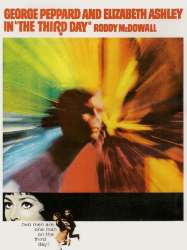
The Third Day (1965)
, 1h59Directed by Jack Smight
Origin USA
Genres Drama, Thriller
Actors George Peppard, Elizabeth Ashley, Roddy McDowall, Arthur O'Connell, Mona Washbourne, Herbert Marshall
Roles Austin Parsons
Rating56%





Steve Mallory sort indemne, mais amnésique, d'un accident où sa voiture est tombée dans un fleuve. Durant trois jours, il va de découvertes en surprises. Il apprend qu'il est marié à Alexandria, fille d'Austin Parsons, fondateur de la société des porcelaines Parsons qui, devenu paralysé, a confié à son gendre la direction de l'entreprise familiale alors que le neveu Oliver Parsons convoitait le poste. Steve découvre qu'il avait une passagère dans sa voiture, Holly Mitchell, serveuse de bar soupçonnée d'être sa maîtresse et retrouvée morte dans l'accident. Le veuf, Aldrich, l'accuse de meurtre ainsi qu'Oliver. Steve est alors appréhendé par la police et incarcéré. Mais Aldrich enlève Alexandria, menaçant de la tuer pour venger la mort de sa femme. Steve réussit à s'évader et parvient à délivrer Alexandria. Tandis qu'Aldrich est arrêté, l'enquête révèle qu'Holly est morte noyée.
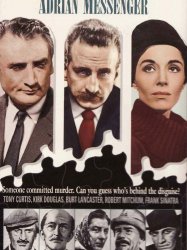
The List of Adrian Messenger (1963)
, 1h34Directed by John Huston
Origin USA
Genres Drama, Thriller, Crime
Actors George C. Scott, Dana Wynter, Kirk Douglas, Paul Frees, John Merivale, Clive Brook
Roles Sir Wilfrid Lucas
Rating67%





A writer named Adrian Messenger (John Merivale) believes a series of apparently unrelated "accidental" deaths are actually linked murders. He asks his friend Anthony Gethryn (George C. Scott), recently retired from MI5, to help clear up the mystery. However, Messenger's plane is bombed while he is en route to collect evidence to confirm his suspicions and, with his dying breath, he tries to tell a fellow passenger the key to the mystery.

The Caretakers (1963)
, 1h37Directed by Hall Bartlett
Origin USA
Genres Drama
Themes Medical-themed films, Films about psychiatry, Films set in psychiatric hospitals
Actors Joan Crawford, Robert Stack, Polly Bergen, Janis Paige, Constance Ford, Herbert Marshall
Roles Dr. Jubal Harrington
Rating56%





Optimistic psychiatrist Dr. Donovan MacLeod wants to prove his theory that mental patients can benefit from group therapy. His method of treatment, with no violence or punishment, is met with a great deal of resistance from his unyielding and self-righteous head nurse, Lucretia Terry, who believes in traditional methods such as strait-jackets and padded cells for treating the mentally ill.
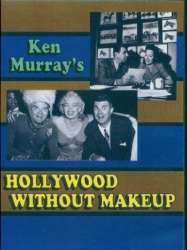
Hollywood Without Make-Up (1963)
Directed by Ken Murray
Origin USA
Genres Documentary
Themes Documentary films about business, Documentary films about the film industry, Documentary films about cities
Actors Kirk Douglas, Ken Murray, Cary Grant, June Allyson, George K. Arthur, Eddie Albert
Roles Self (archive footage)
Rating71%





The film consists of archive footage of famous Hollywood stars, mostly home movies showing the stars as themselves instead of playing a role in front of the camera.
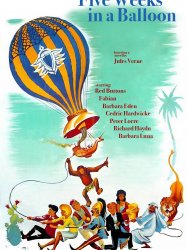
Five Weeks in a Balloon (1962)
, 1h41Directed by Irwin Allen
Origin USA
Genres Science fiction, Comedy, Action, Adventure
Themes Transport films, Aviation films, Children's films
Actors Cedric Hardwicke, Red Buttons, Barbara Eden, Peter Lorre, Fabian Forte, Richard Haydn
Roles The Prime Minister
Rating57%





The film begins with the flight of the balloon Jupiter, invented by Professor Fergusson (Cedric Hardwicke). In the unicorn-shaped gondola, the passengers Chiddingfold (Ronald Long) and Sir Henry Vining (Richard Haydn) scream in horror as the balloon rapidly descends, but the Professor remains calm as he planned for this to happen. He then signals the pilot Jacques (Fabian) to ascend the balloon, who explains how balloon is able to ascend and descend without the loss of gas or ballast. The balloon successfully lands and attracts a crowd, but Sir Henry and the other passenger are dissatisfied after the seemingly disastrous descent. Sir Henry, the president of the Royal Geographic Society, refuses to fund the Professor's plan to explore east Africa, while Chiddingfold leaves claiming he has an "appointment". The Professor seems out of financial backing for his plans, but an American journalist talks to Fergusson about having his nephew and star reporter Donald O'Shea (Red Buttons) as part of Fergusson's plan to explore east Africa.

A Fever in the Blood (1961)
, 1h57Directed by Vincent Sherman
Origin USA
Genres Drama
Actors Efrem Zimbalist II, Angie Dickinson, Jack Kelly, Don Ameche, Ray Danton, Herbert Marshall
Roles Gov. Oliver P. Thornwall
Rating63%





A man murders a woman who rejects him, then creates a fire to make the death look accidental. The district attorney, Dan Callahan, on a hunting trip with Judge Leland Hoffman, is summoned back to the city to handle the murder investigation. Callahan and Hoffman both have political ambitions, eyeing the upcoming election for governor.

College Confidential (1960)
, 1h31Directed by Albert Zugsmith
Origin USA
Genres Drama
Actors Steve Allen, Mamie Van Doren, Jayne Meadows, Herbert Marshall, Mickey Shaughnessy, Sheilah Graham
Roles Henry Addison
Rating48%





A sociology professor Steve McInter starts conducting a survey at Collins College about the lifestyles and sexual urges of the younger generation. One of his students Sally Blake excels with the survey and may or may not be having an affair with the professor. A reporter Betty Ducayne receives an anonymous tip that Steve is corrupting the youth and she discovers a dark past which he had obviously fled from.

Midnight Lace (1960)
, 1h50Directed by David Miller
Origin USA
Genres Drama, Thriller, Horror
Themes Théâtre, Films based on plays
Actors Doris Day, Rex Harrison, John Gavin, Myrna Loy, Roddy McDowall, John Williams
Roles Charles Manning
Rating67%





Newlywed American heiress Kit Preston is living with her financier husband Tony on Grosvenor Square in London. Returning home in a dense fog, she is startled by an eerie, electronic-like voice threatening to kill her within the month. The voice calls her by name and torments her as she runs to escape. Tony tries to convince her she has been the victim of a practical joker and suggests they travel to Venice for the honeymoon they never had.
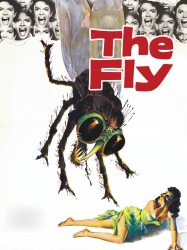
The Fly (1958)
, 1h34Directed by Kurt Neumann
Origin USA
Genres Drama, Science fiction, Fantastic, Horror
Themes Films about animals, Films about computing, Natural horror films, Films about insects, Cyberpunk films, Children's films
Actors David Hedison, Patricia Owens, Vincent Price, Herbert Marshall, Kathleen Freeman, Betty Lou Gerson
Roles Insp. Charas
Rating70%





In Montreal, Quebec, scientist Andre Delambre (David Hedison) is found dead with his head and arm crushed in a hydraulic press. Although his wife Helene (Patricia Owens) confesses to the crime, she refuses to provide a motive and exhibits a number of strange behaviors. In particular, she is obsessed with flies, including a supposedly white-headed fly. Andre's brother, Francois (Vincent Price), lies and says he caught the white-headed fly; and, thinking he knows the truth, Helene explains the circumstances surrounding Andre's death.
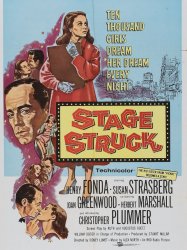
Stage Struck (1958)
, 1h35Directed by Sidney Lumet
Origin USA
Genres Drama, Romance
Themes Théâtre, Films based on plays
Actors Henry Fonda, Susan Strasberg, Joan Greenwood, Herbert Marshall, Christopher Plummer, Pat Harrington, Jr.
Roles Robert Harley Hedges
Rating59%





Une jeune femme débarque à New York afin de faire carrière comme actrice.

Wicked as They Come (1956)
, 1h34Directed by Ken Hughes
Origin United-kingdom
Genres Drama
Actors Arlene Dahl, Philip Carey, Herbert Marshall, Michael Goodliffe, David Kossoff, Sid James
Roles Stephen Collins
Rating65%





Poor girl from the slums Katherine Allenbourg trades on her looks. She enters a beauty contest, then charms the elderly gentleman running it, Sam Lewis, into fixing it so she will win first prize, a trip to Europe. She promptly abandons Sam.
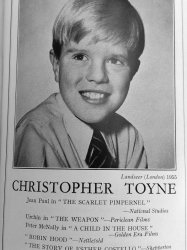
The Weapon (1956)
, 1h17Directed by Val Guest, Hal E. Chester
Genres Thriller, Crime
Actors Steve Cochran, Lizabeth Scott, Herbert Marshall, Nicole Maurey, George Cole, Laurence Naismith
Roles Insp. Mackenzie
Rating61%





Lizabeth Scott plays Elsa Jenner, widowed mother to her young son Erik. Whilst playing with friends in an abandoned and deteriorated old building, Erik finds a small handgun stuck to a brick. As all the boys try and pull it free, it accidentally fires a shot from Erik's hands, hitting another boy. Believing he has killed his friend, Erik immediately runs away.

The Virgin Queen (1955)
, 1h32Directed by Henry Koster
Origin USA
Genres Drama, Biography, Historical, Romance
Themes Political films, Children's films, Films about royalty
Actors Bette Davis, Richard Todd, Joan Collins, Jay Robinson, Herbert Marshall, Dan O'Herlihy
Roles Lord Leicester
Rating66%





In 1581, Walter Raleigh (Richard Todd), recently returned from the fighting in Ireland, pressures unwilling tavern patrons into freeing from the mud the stuck carriage of Robert Dudley, Earl of Leicester (Herbert Marshall). When Leicester asks how he can repay the kindness, Raleigh asks for an introduction to Queen Elizabeth I (Bette Davis), to whom Leicester is a trusted adviser. Leicester grants the request.

Gog (1954)
, 1h25Directed by Herbert L. Strock
Origin USA
Genres Science fiction, Thriller, Horror, Crime
Themes Films set in the future, Films about extraterrestrial life, Films about extraterrestrial life, Alien invasions in films, Disaster films
Actors Richard Egan, Constance Dowling, Herbert Marshall, Philip Van Zandt, Michael Fox, William Schallert
Roles Dr. Van Ness
Rating54%





Unaccountable, deadly malfunctions begin occurring at a top-secret government facility under the New Mexico desert where a space station is being constructed. Agents from the Office of Scientific Investigation (OSI) in Washington, D.C. are called in to investigate.

Riders to the Stars (1954)
, 1h21Directed by Richard Carlson, Herbert L. Strock
Origin USA
Genres Drama, Science fiction, Adventure
Themes Space adventure films, Space opera
Actors William Lundigan, Martha Hyer, Herbert Marshall, Richard Carlson, Dawn Addams, Robert Karnes
Roles Dr. Donald L. Stanton / Narrator
Rating54%





A group of highly qualified single men, including Dr. Richard Stanton (William Lundigan) and Dr. Jerry Lockwood (Richard Carlson), are recruited for a top secret project. They undergo a series of rigorous physical and psychological tests, during which Stanton becomes attracted to the beautiful Dr. Jane Flynn (Martha Hyer), one of the scientists testing the candidates. After most of the candidates have been eliminated from consideration, the four remaining are told about the purpose of the project.
 Connection
Connection






